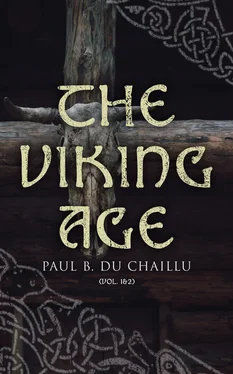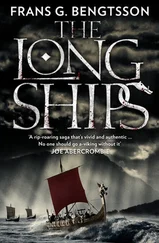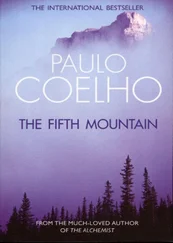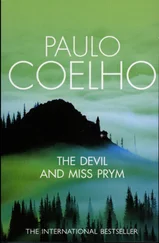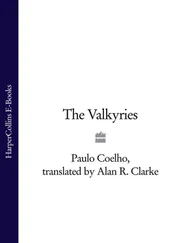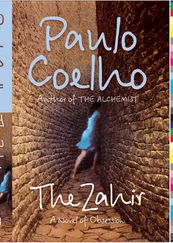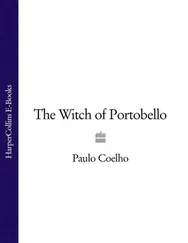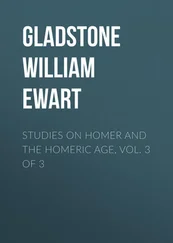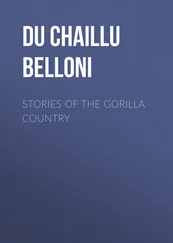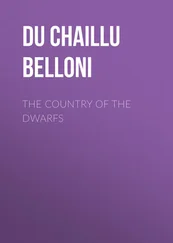Marks were cut on pieces of wood or other material, and each person had his mark. Sometimes the places at feasts were assigned by lot, and lots were also drawn for human sacrifice. The images of some of the gods were sometimes marked on the lots. 235
“At the advice of powerful men it was agreed that the kings should draw lots as to which of them should hereafter rule, and the lots were to be cut and put in the folds of a cloak. Then Eystein asked his brother King Olaf with whom he sided in this matter. He answered: ‘We have long kept our love for each other and agreed well; thy will in regard to the rule of the land and the laws, King Eystein, is also mine. Eystein said: ‘I advise thee, King Sigurd, to cut the third lot for the cloak, for King Olaf, like ourselves, is the son of Magnús.’ Sigurd answered: ‘Men can see that every expedient has now been tried, for thou wantest to have two lots where I have one, but I will not deprive King Olaf of any honour.’ Then the lots were put into the cloak, and the lot of King Sigurd came up, and he was to rule” (Sigurd Jorsalafari’s Saga, c. 21).
It seems to have been the custom among zealous sacrificers to consecrate their lands and property to the gods, without however denying themselves the use and enjoyment thereof. That this was customary all over the North we may conclude from the mass of names of farms, villages, &c., named after the gods Odin, Frey, and Thor.
In their colonies the people followed the same custom of dedicating their settlements or lands to the gods, and we find ample proof of this in England, Normandy, Iceland, the Orkneys and Faroe Islands.
Among the gods most worshipped besides Odin were Frey, Thor and Njörd.
We find from the Sagas that Frey was worshipped equally in Norway, Iceland, and Sweden, and no doubt also in Denmark.
One summer when Hallfred and his followers came from Iceland to Norway, and asked for tidings, they were told that there had been a change of chiefs in Norway; that Hakon Jarl was dead, and Olaf Tryggvason had come instead with a new creed and commandments.
“Then the men on the ship agreed to make a vow; they vowed to give much property to Frey if they got a fair wind to Sweden, but to Thor or Odin if they got to Iceland; if they should not get a fair wind to sail, the King should have his way.” They never got a fair wind, and had to sail to Thrándheim (Hallfredar Saga, c. 5).
“When Hrafnkel had settled at Adalbol (Iceland) he had a great sacrifice. He had a large temple made. He loved Frey more than other gods, and gave him one-half of all his most precious things. He settled in the whole valley and gave lands to the people, but wanted to rule them and became godi (= temple-priest and judge) over them. After this his name was lengthened and he was called Frey’s godi.”
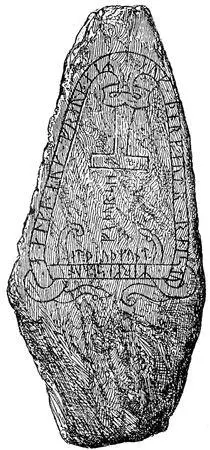
Fig. 774.—Runic stone, with hammer, at Stenqvista Södermanland, Sweden. Stones with a similar-shaped hammer have been found in several places in Denmark and Sweden.
“Hrafnkel owned one valuable thing which he loved more than any other. This was a horse with a dark stripe along its back which he called Freyfaxi; he devoted to his friend Frey one-half of this horse, and loved it so much that he made a vow to slay any man who rode it against his will” (Hrafnkel Freysgodi’s Saga).
Thorkel had been forced to sell his land to Glum. Before he departed from Thverá he went to the temple of Frey, leading thither an ox, and said:
“Frey, who long hast been my patron, and hast accepted many gifts from me and rewarded me well, now I give this ox to thee, so that Glum may leave Thveráland as much against his will as I do now: let me see some token whether thou acceptest it from me or not. At this the ox bellowed loud and fell dead, which Thorkel liked well, and he was less sad because he thought his prayer was heard”(Vigaglum’s Saga, c. 9).
Thor 236like Frey was invoked. The poetical and figurative names given to him are far from being as numerous and beautiful as those given to Odin. It was customary, at least in the earliest times, to make the sign of the hammer at burials and marriages. 237This hammer was called Mjollnir, and (Lokasenna) when Thor is taunted by Loki, he answers each time by these lines—
“Be thou silent, coward,
My Thrudhamar (mighty hammer) Mjollnir 238
Shall take thy talk from thee.”
But that the svastica was emblematic of the sign of Thor, and had been adopted as such by the people of the North, is only an hypothesis, for it is also found in Greece and other countries; there is nothing in the Sagas to prove the assertion.
“Asbjörn Reyrketilsson and his brother Steinfinn took up land above Krossá, and east of Fljot. Steinfinn lived at Steinfinnstadir, and no man has descended from him. Asbjörn consecrated his land to Thor, and called it Thorsmörk” (Landnama v., 2 ch.).
The hammer as an ornament is not uncommon, and may have been used as an amulet, as is seen on several runic stones (see p. 352).
Even Christians called upon Thor for help in sea voyages and difficulties.
“Eyvind, from Sweden, went on expeditions westward, and in Ireland married Raförta, daughter of the Irish king Kjarval. She bore him a son, Helgi, and they sent him to the Hebrides to be fostered. Two winters later they came back to the Hebrides, and did not recognise him, as he had been starved. They therefore called him Helgi the Lean, and took him away. He was after this fostered in Ireland, and when grown up became a highly honoured man, and was married to Thórun Hyrna, daughter of Ketil Flatnose. They had many children; Hrólf and Ingjald were their sons. Helgi the Lean went to Iceland with his wife and children. He had a very mixed creed; he believed in Christ, but nevertheless invoked Thor for help in sea voyages and in difficulties. When he saw Iceland, he inquired from Thor where he should take up land. The answer told him to go to the north coast of Iceland” (Landnama iii., 12). 239
Worship of Njörd. —Njörd 240was also worshipped, though we have no account of sacrifices made to him; but the formulary of the oath, “So help me Frey, Njörd, and the Almighty As (Odin)!” shows the existence of his worship. Egil calls upon him and the two other gods to drive Eirik Blood-axe from the land. 241

Fig. 775.—½ real size.
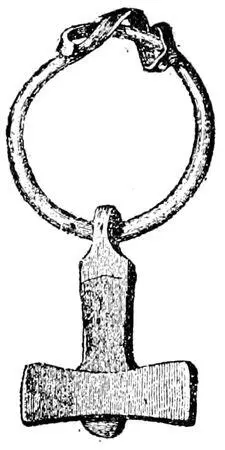
Fig. 776.—Thor’s hammer. In a field. Läby, Uppland. Real size.
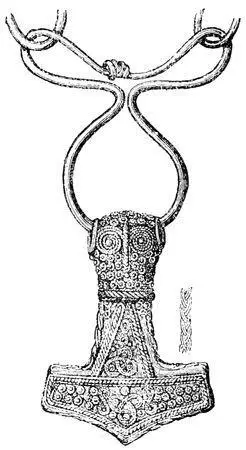
Fig. 777.—Thor’s hammer and chain of silver.—Bredsätra, Öland. Real size.
There were men who did not believe in and did not worship Odin, as may be seen from the following example:—
“Then came to Hrafnista, Framar, a viking king; he was a sacrificer and iron did not wound him. He demanded in marriage Hrafnhild, the daughter of Ketil Hæng. Ketil answered that she should choose a husband herself. She refused Framar. Therefore Framar challenged Ketil to holmganga at Arhaug, on the first day of Yule, and said he should be every man’s nithing if he did not come. On Yule-eve he came to Arhaug. Framar and the men of the land sacrificed for good years.
Читать дальше
